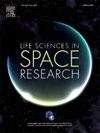Parabolic flight as a research platform to investigate ophthalmic changes in microgravity
IF 2.8
3区 生物学
Q2 ASTRONOMY & ASTROPHYSICS
引用次数: 0
Abstract
Parabolic flight serves as an important terrestrial analog to study acute physiological changes in microgravity without the need for space travel. During a parabolic flight, alternating hypergravity and microgravity phases, lasting up to 40 seconds, enable research into ophthalmic changes. In this review, we discuss the application of parabolic flight as a platform to study microgravity-related changes that might impact ophthalmology including intraocular pressure, intracranial pressure, choroidal blood flow, and modified eye movement patterns. We further highlight how these insights could aid our understanding of vestibulo-ocular reflexes and conditions such as Spaceflight Associated Neuro-ocular Syndrome (SANS). While the brief duration of microgravity exposure limits some applications, parabolic flight continues to provide a controlled environment for examining acute gravitational effects on eye health and evaluating many space medicine interventions.
以抛物线飞行为研究平台,研究微重力环境下的眼部变化
抛物飞行是研究微重力下急性生理变化而不需要太空旅行的重要地面模拟。在抛物线飞行过程中,持续40秒的超重力和微重力交替阶段,使研究眼科变化成为可能。在这篇综述中,我们讨论了应用抛物线飞行作为研究微重力相关变化的平台,这些变化可能影响眼科,包括眼压、颅内压、脉络膜血流量和眼球运动模式的改变。我们进一步强调这些见解如何有助于我们理解前庭-眼反射和诸如航天相关神经-眼综合征(SANS)的条件。虽然短暂的微重力暴露时间限制了一些应用,但抛物线飞行继续为检查对眼睛健康的急性重力影响和评估许多空间医学干预措施提供了一个受控环境。
本文章由计算机程序翻译,如有差异,请以英文原文为准。
求助全文
约1分钟内获得全文
求助全文
来源期刊

Life Sciences in Space Research
Agricultural and Biological Sciences-Agricultural and Biological Sciences (miscellaneous)
CiteScore
5.30
自引率
8.00%
发文量
69
期刊介绍:
Life Sciences in Space Research publishes high quality original research and review articles in areas previously covered by the Life Sciences section of COSPAR''s other society journal Advances in Space Research.
Life Sciences in Space Research features an editorial team of top scientists in the space radiation field and guarantees a fast turnaround time from submission to editorial decision.
 求助内容:
求助内容: 应助结果提醒方式:
应助结果提醒方式:


